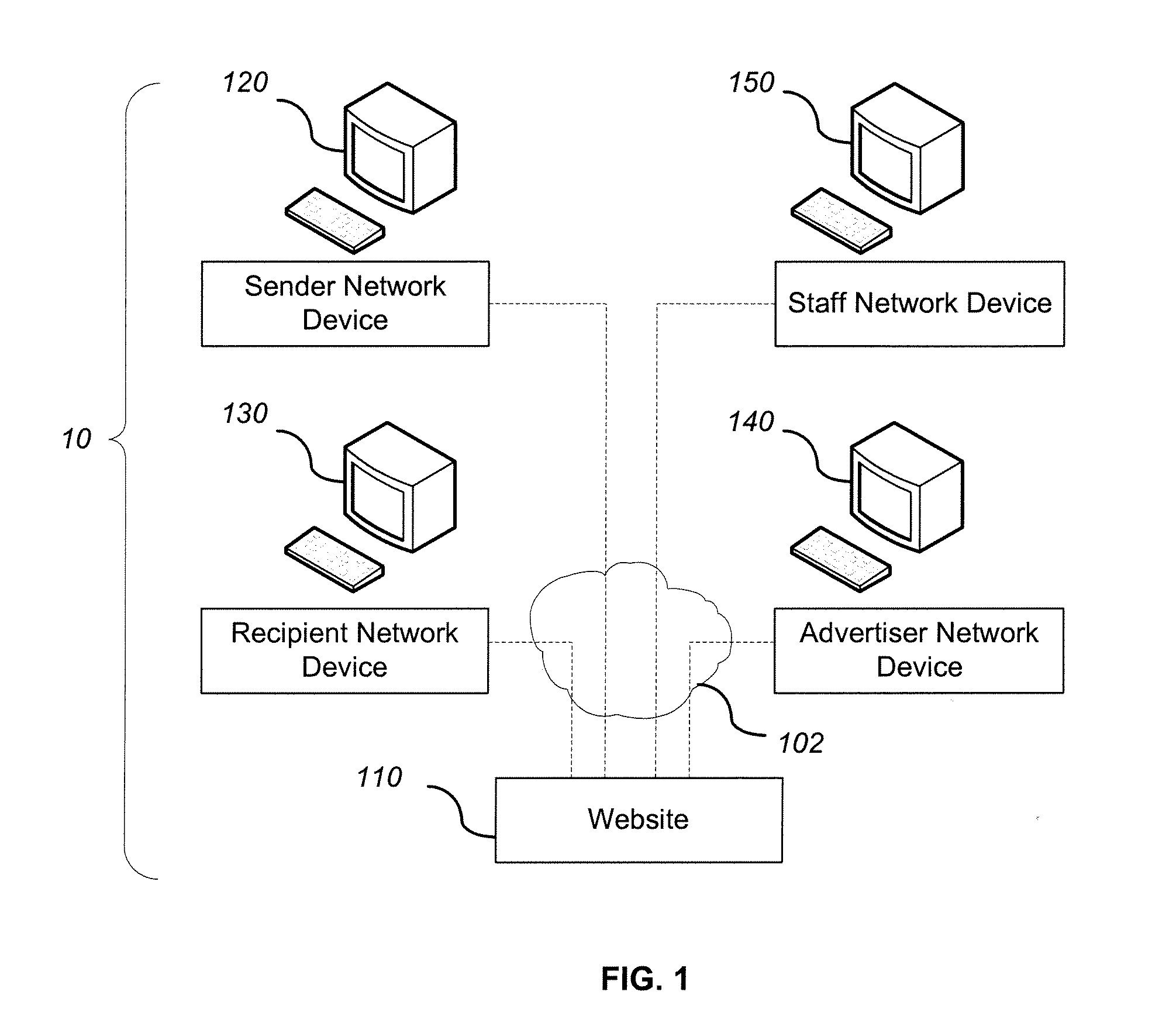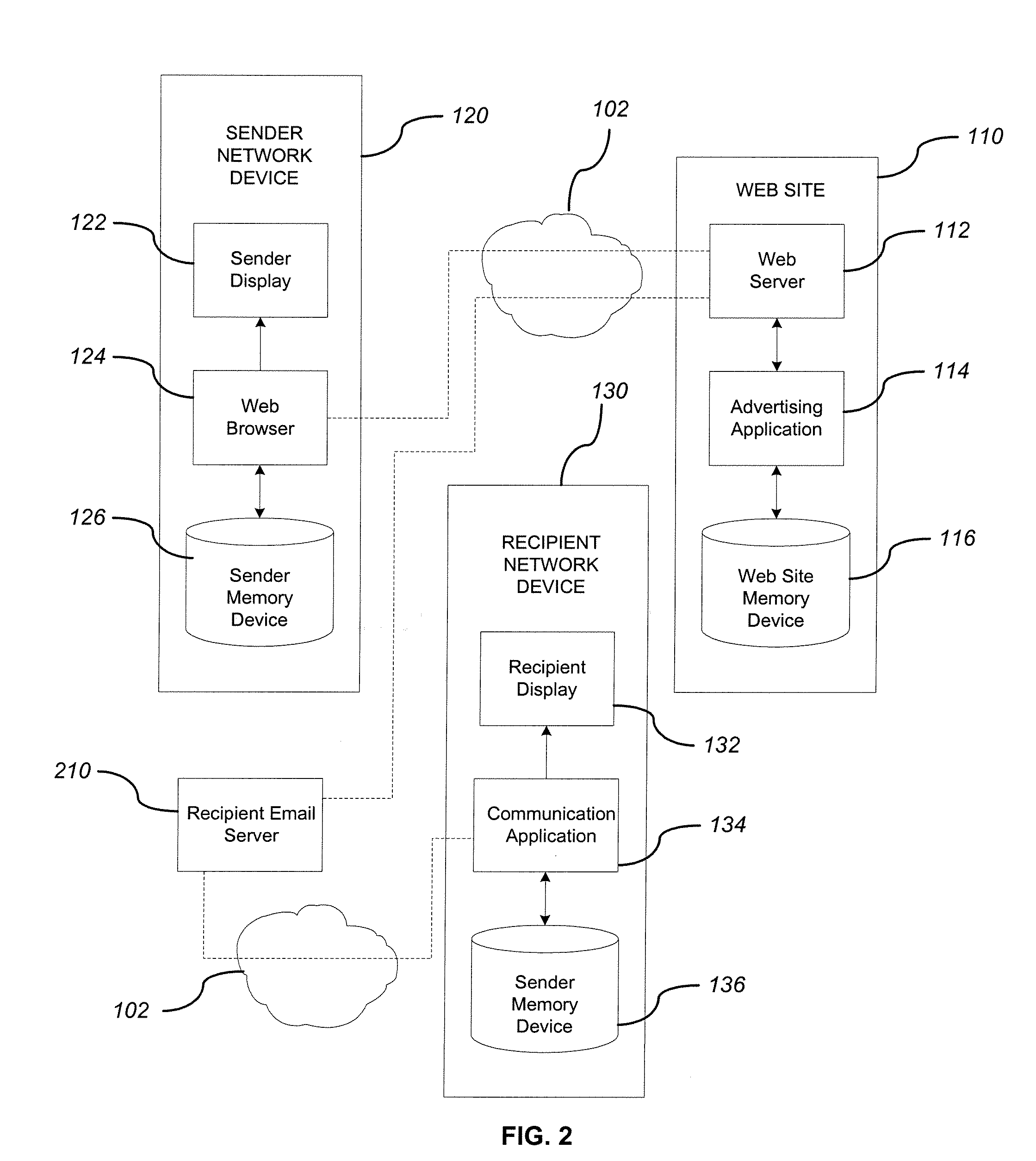System and method for adding an advertisement to a personal communication
a personal communication and advertisement technology, applied in the field of advertising, can solve the problems of reducing sales in off-line markets through poor brand name association, affecting the long-term effect of the advertisement, and a large setup cost associated with a web site capable of receiving, storing and transmitting large quantities of data,
- Summary
- Abstract
- Description
- Claims
- Application Information
AI Technical Summary
Benefits of technology
Problems solved by technology
Method used
Image
Examples
Embodiment Construction
[0063]The present invention provides a system and method for adding an advertisement to a digital message, providing compensation to the contributor of that message in exchange for adding an advertisement, and providing additional communication data to a recipient that interacts with the advertisement regardless of the network device the recipient is utilizing. The advertisement may be selected by the contributor of the digital message, by a contextual algorithm running on a network application server, or by a combination of both. In the detailed description that follows, like element numerals are used to describe like elements illustrated in one or more figures. Various terms and acronyms are used throughout the detailed description, including the following:
[0064]Application Program. Within the context of computer hardware and software, an application program is a set of one or more computer programs that performs a function when executed within a computer hardware device. If the s...
PUM
 Login to View More
Login to View More Abstract
Description
Claims
Application Information
 Login to View More
Login to View More - R&D
- Intellectual Property
- Life Sciences
- Materials
- Tech Scout
- Unparalleled Data Quality
- Higher Quality Content
- 60% Fewer Hallucinations
Browse by: Latest US Patents, China's latest patents, Technical Efficacy Thesaurus, Application Domain, Technology Topic, Popular Technical Reports.
© 2025 PatSnap. All rights reserved.Legal|Privacy policy|Modern Slavery Act Transparency Statement|Sitemap|About US| Contact US: help@patsnap.com



